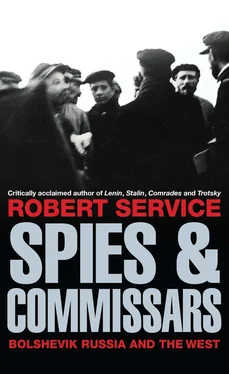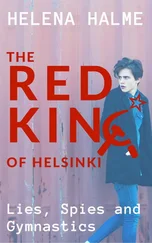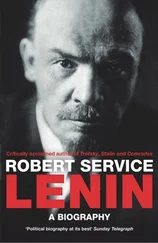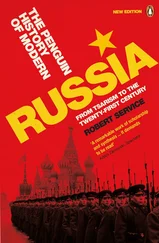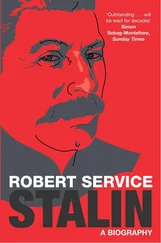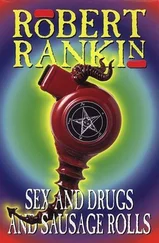Kun, however, had come to Berlin invested with the prestige and authority of a Comintern official; he saw to it that Levi was treated as a troublemaker who was breaking party discipline. He relied on the fact that the German communists had joined the party because they thought Germany was ready for communization. They yearned to reproduce the kind of revolution the Bolsheviks had started in Russia in October 1917. Kun drew together Ernst Thalmänn and a group of young leaders with an impulsive desire to take to the streets. Strikes and demonstrations were organized. Proclamations were issued. Rifles were acquired for use when the time came. The German communist leadership rapidly grew in confidence and ordered its supporters to begin what became known as the March Action. It was soon obvious that Kun’s plans were based on fantasies. A majority of the working class had no wish to see the elected social-democratic government overturned. At least in Munich in March 1919 there had been a semblance of soviets. There was no equivalent whatsoever in Berlin. Even Kun’s failed Hungarian communist republic had attracted support from a large number of workers. In Berlin in early 1921 the social-democrats were more popular than the communists. The communist party was small and inexperienced and, when it came out on the streets, the Reichswehr and police forced it to withdraw in defeat on 31 March.
In Moscow the Bolsheviks were horrified. If Lenin and Trotsky had been given any advance notice about the March Action they certainly did not admit to it. In fact, they were angry with the bunglers in Russia and Germany. Radek and Bukharin had never had a reputation for sagacity, and Zinoviev was forever trying to make up for his doubts in 1917 about the seizure of power in Petrograd. Although the Politburo refrained from reprimanding them, they in return were compelled to accept and endorse Comintern’s criticism of the German Communist Party. A scapegoat had to be found. With absolutely no justification — and as a way of bringing Germany’s communists to heel for the future — Lenin targeted Paul Levi. Levi was the very man who had endeavoured to stop the March Action before it could begin. But he had breached party discipline whereas the bunglers had behaved with perfect loyalty.
The Soviets already had a reputation for oppression at home and subversion abroad. The March Action, following so soon after the Kronstadt mutiny, forced them to strengthen their propaganda efforts. Louise Bryant faithfully relayed Trotsky’s words to the International News Service. He pretended that the revolutionary sailors of 1917 had left Kronstadt long before, adding that the mutiny was largely the work of White naval officers who had taken refuge at Tallinn and then spread their influence to the remaining garrison. 21Trotsky insisted, too, that the Mensheviks and Socialist-Revolutionaries were acting like ‘the banana peel on which the working class would slip into counter-revolution against the Soviets’. 22Bryant compliantly treated Kronstadt as a minor distraction. In her series of dispatches, she declared that American firms could make huge profits if they started trading with Russia. America’s industrial goods would be exchanged for Russian raw materials. It could be a relationship of perfect equilibrium. 23Bryant probably knew nothing about conditions in the ‘disciplinary colony’ at Ukhta north of the Arctic Circle where the ‘Kronstadt bandit sailors’ were sent on Politburo orders after the leaders of their mutiny were executed. 24She had also not been in Berlin recently and had no direct acquaintance with the pointless loss of workers’ lives on the streets there. She knew of the concerns of her late husband John Reed about Soviet Russia, and as a foreign journalist she had the opportunity to explore them; but she entirely failed to take it.
As winter gave way to spring, the prospects for communist rule were as yet unclear. Economic compromise and political ruthlessness had prevailed over the massive popular resistance. The Bolsheviks had yielded the minimum necessary to maintain their power. They had won the Civil War but did not yet have a lasting plan for the peace. Their policies were not a coherent programme of action, and they had not ironed out the creases in external and internal policy. The Bolsheviks had never been more confused about their general strategy. Their new measures were extricating them from an immediate emergency. But the party had yet to demonstrate that such measures offered a way to realize communism in Russia, far less in the rest of the world.
31. THE SECOND BREATHING SPACE
The New Economic Policy is usually credited with the regeneration of Russia’s economy in 1921, but in fact the enabling legislation for agrarian reform was not passed until April that year. Months were then spent in convincing the peasantry that the authorities were in earnest about permitting private local trade in grain. Three years of forcible expropriation, compulsory labour and endless conscriptions in the Civil War had fostered rural distrust and hatred. It was months into 1922 before the Tambov rural revolt was suppressed. There was famine throughout the Volga region. The Soviet regime had to deploy the Red Army simply to get peasant households to complete the spring sowing.
But the long-awaited Anglo-Soviet trade agreement did indeed foster genuine recovery. Petrograd once again became Russia’s chief port. Tallinn lacked enough warehouses for the sudden upsurge in traffic — and after Germany’s defeat of course there was no longer any need to rely on Archangel. 1In April 1921 Pravda reported that Soviet officials were already buying rice, jam, salt beef, vegetables and herring from the United Kingdom. With the British trade under way again, the Kremlin hoped that American and Canadian commercial links would soon be in place. Nonetheless, the economic emergency was still acute. Russia had once had more than enough coal to supply the country’s needs. Now it had to be imported. 2The first priority, though, was to lubricate the wheels of exchange between factory and village. Trotsky called for an import strategy that gave precedence to goods that the peasantry needed. In this way he aimed to stimulate agricultural activity and make the New Economic Policy a success, and he was willing to forgo the purchase of big capital goods for a while and requested that the remainder of the gold reserve should be used for such purposes. Timber, oil and grain should be exported to make up for any shortfall — and Trotsky was not deflected from this strategy by the fact that the Volga peasantry was suffering from malnutrition. 3
Communist hopes of a trade treaty with the US were dispelled by the new administration under President Warren G. Harding, who had won the election in the previous year. On 25 March 1921 Secretary of State Charles Evans Hughes reaffirmed the policy established under Woodrow Wilson that Soviet Russia lacked the necessary conditions for economic co-operation. Litvinov’s overtures were brusquely rebuffed. 4It was Herbert Hoover, recently appointed Secretary of Commerce, who best explained the official standpoint. He denied that Sovnarkom was a legitimate power and predicted that Russian economic recovery would not occur while the communists held capitalism in a vice. The New Economic Policy did nothing to change his mind. He reasoned that the Bolsheviks could not be trusted while they sought financial credits from America despite refusing to guarantee private property as a right under the law. 5He also doubted that the Soviet regime could export anything much except gold, platinum and jewellery. 6This did not stop him from welcoming news that American businesses were signing independent deals with the Soviet government. Shoes and farm equipment were being sold in vast quantities to Russia. 7But if firms conducted business with the communists, they had to do so at their own risk. Hoover was not going to stop American firms trading with Russia, but he was not going to help them either.
Читать дальше
